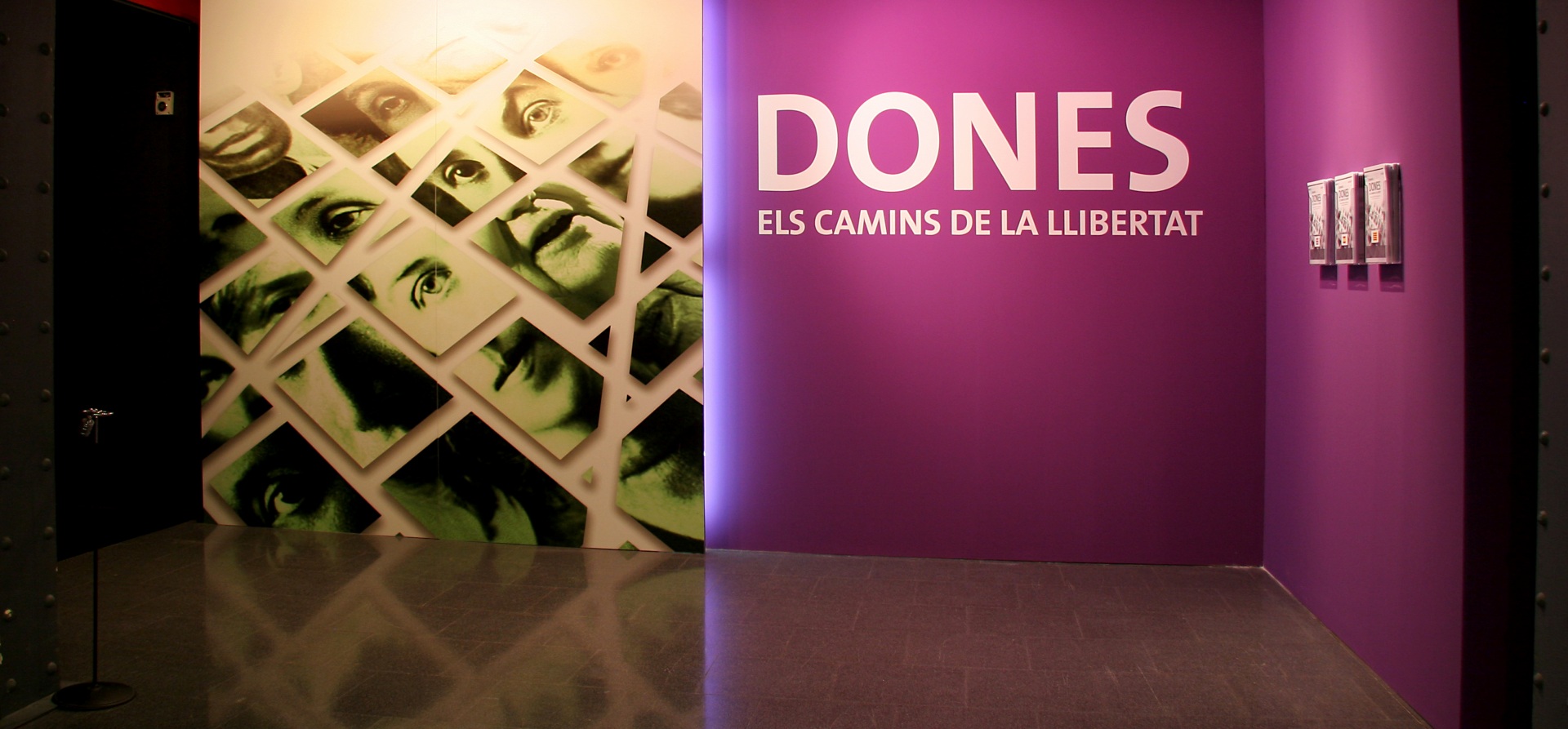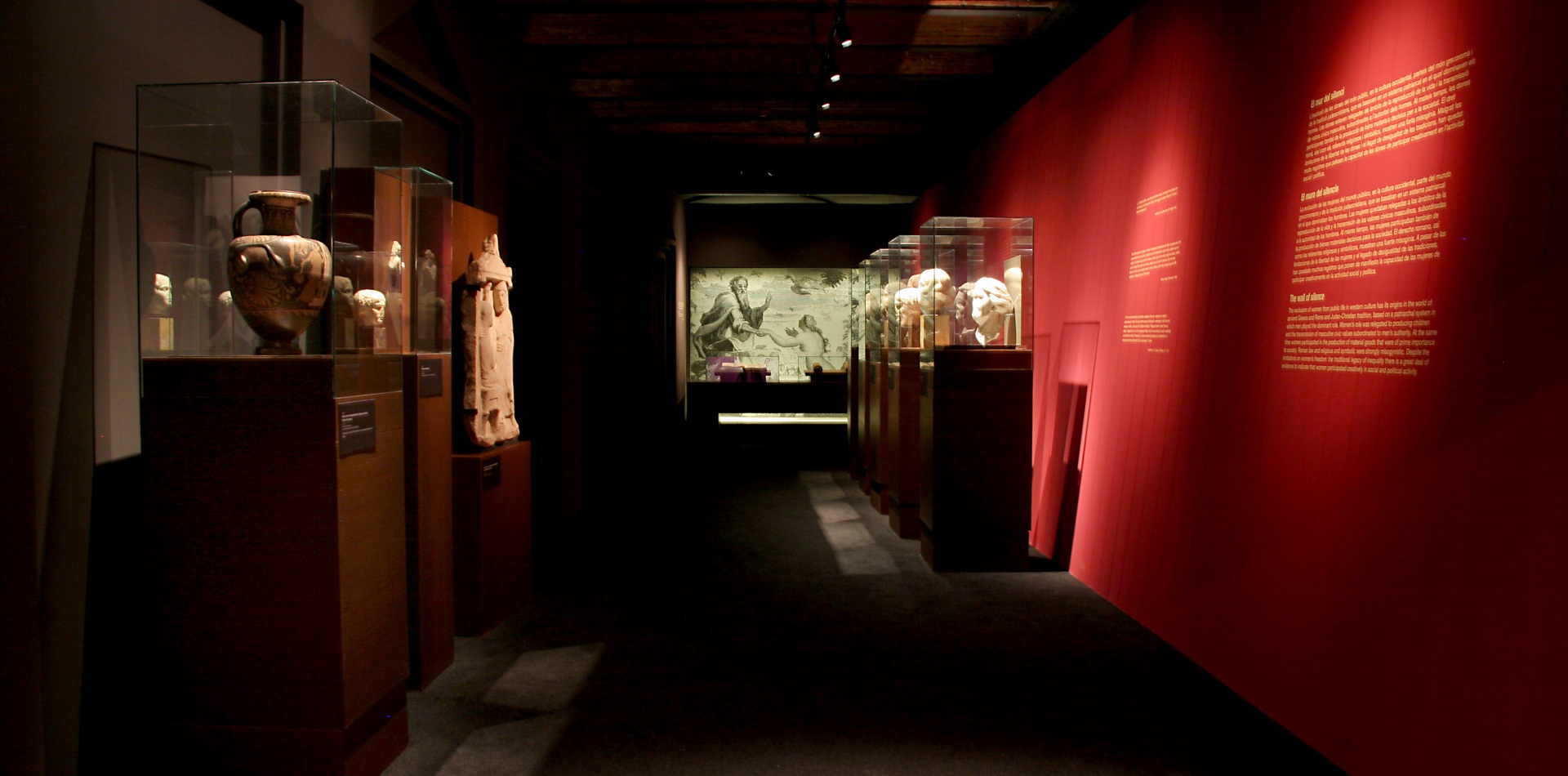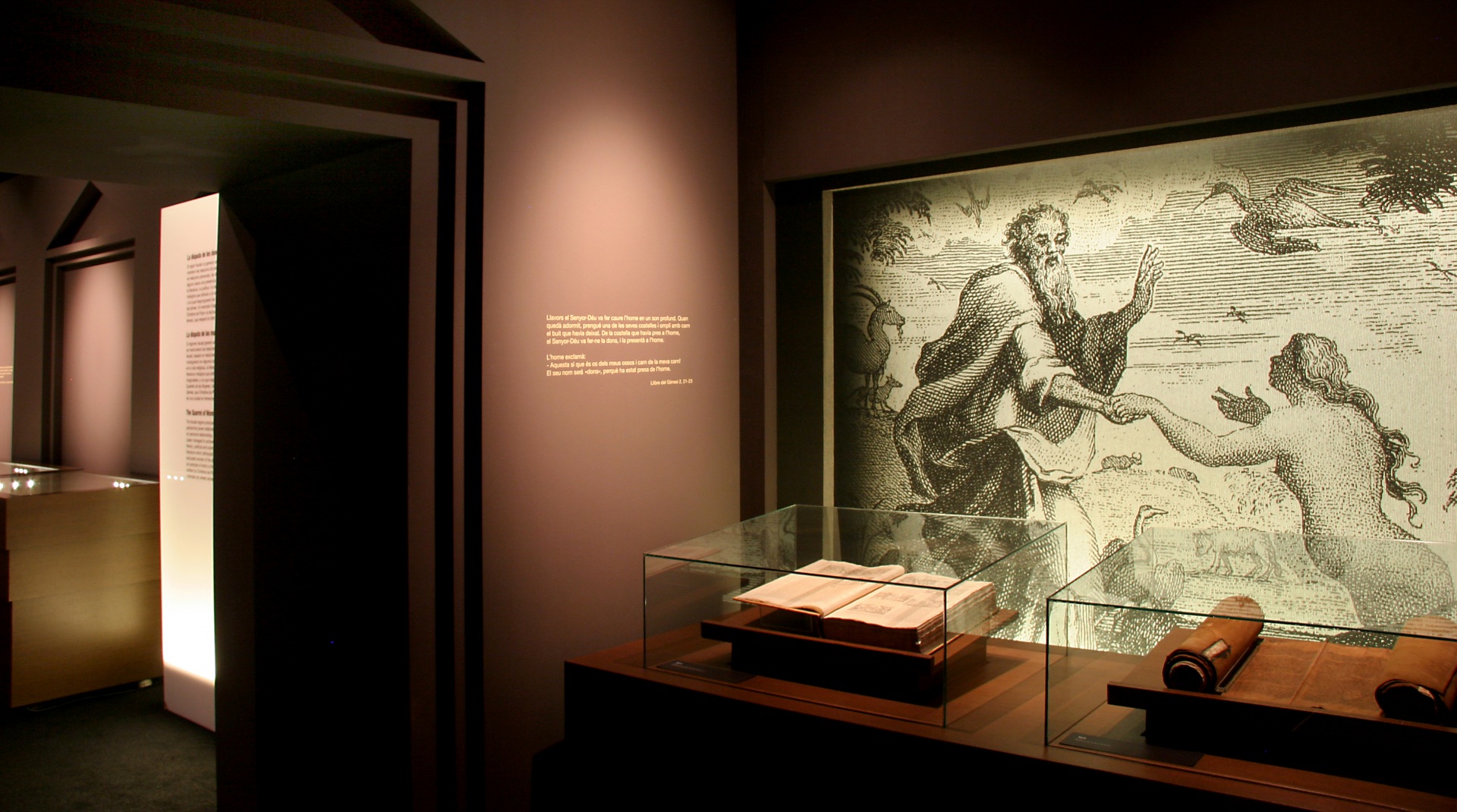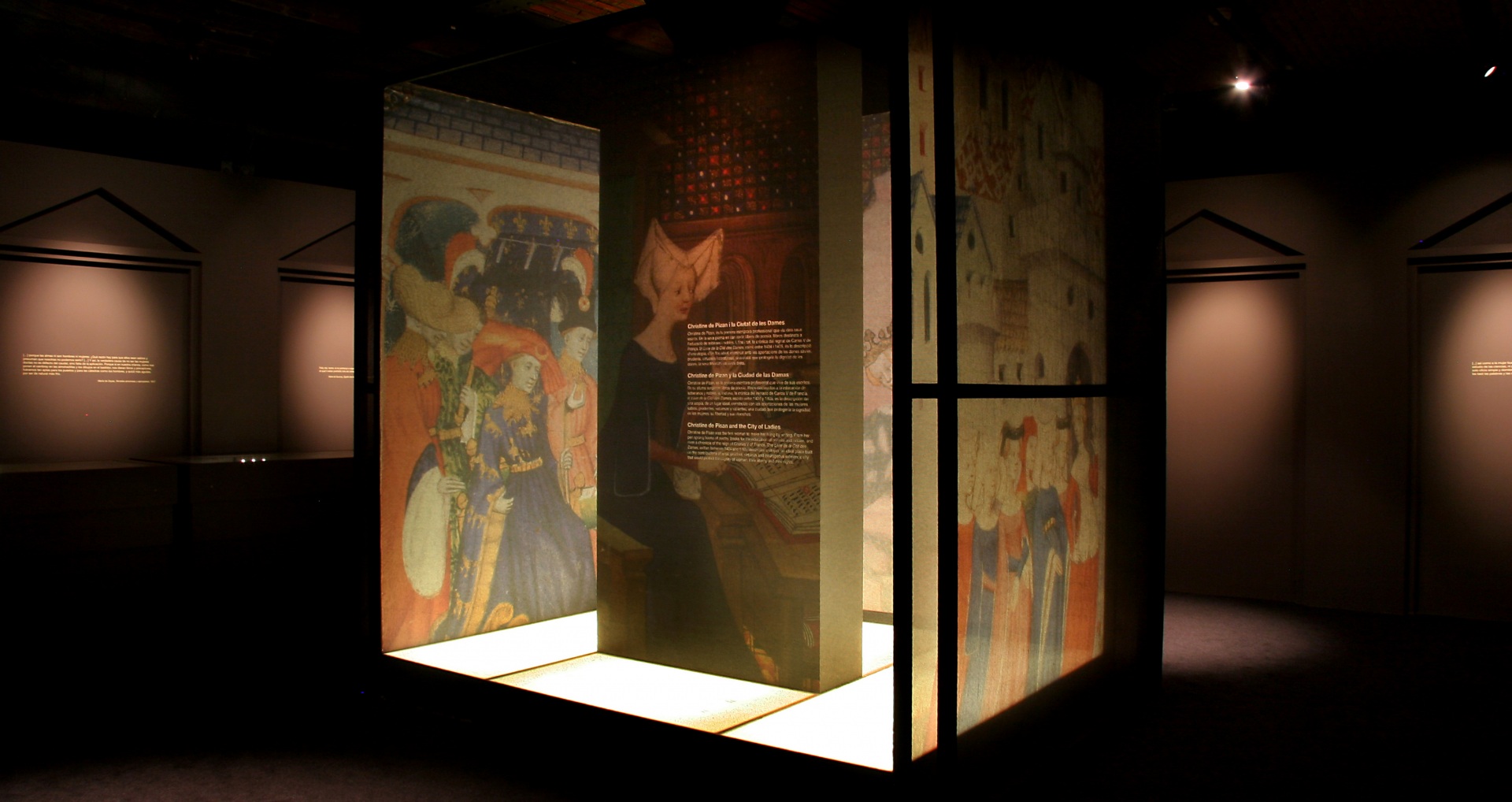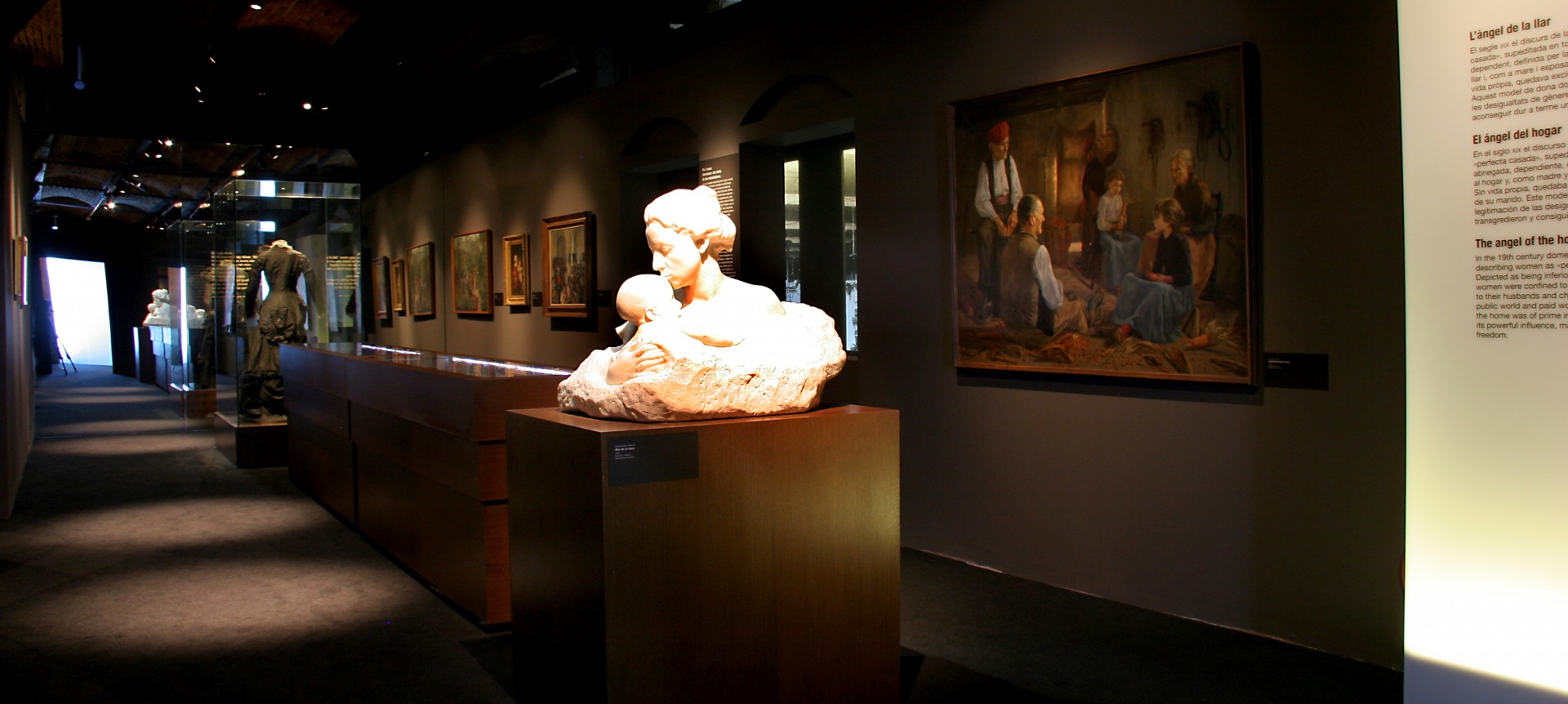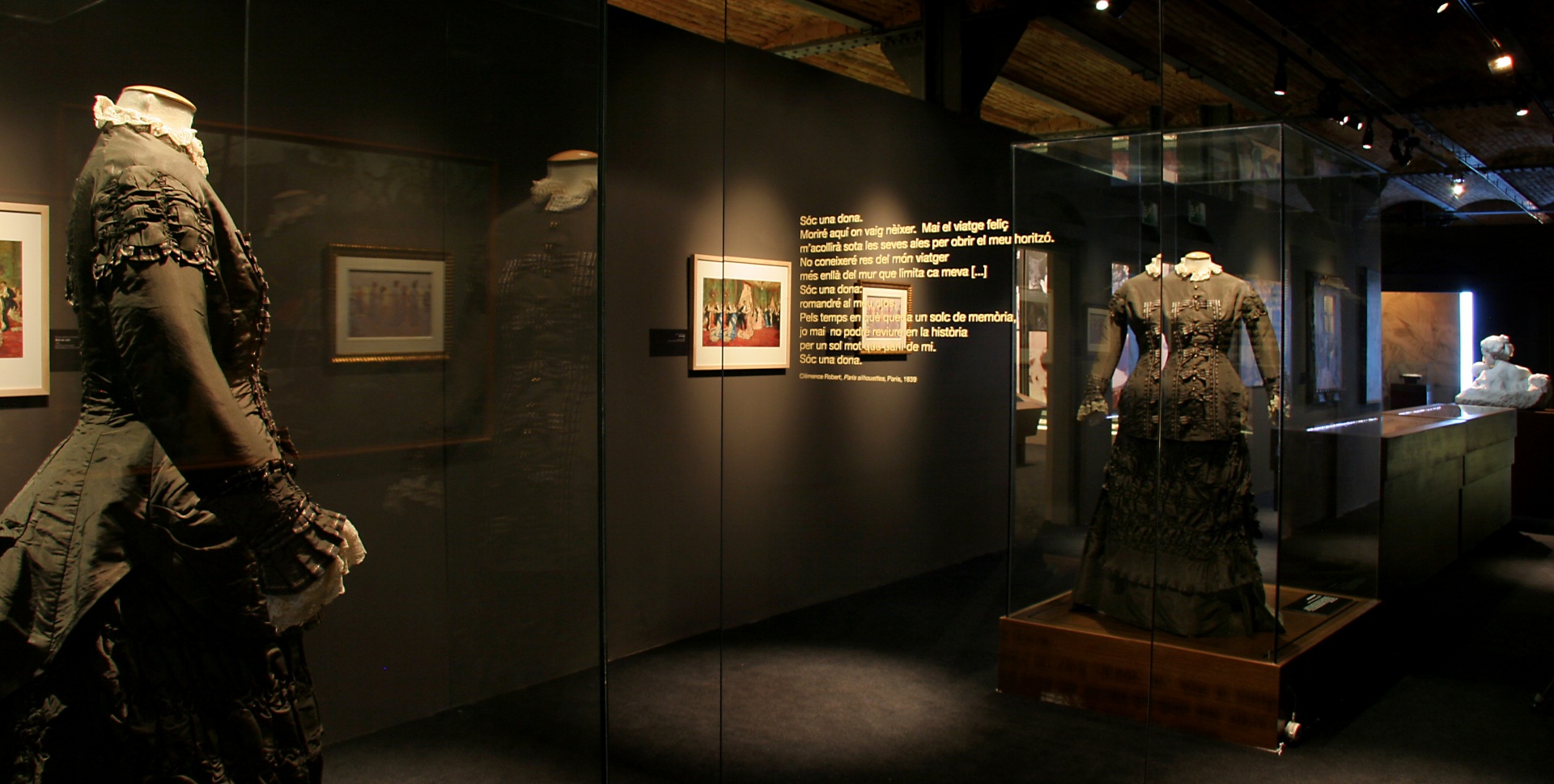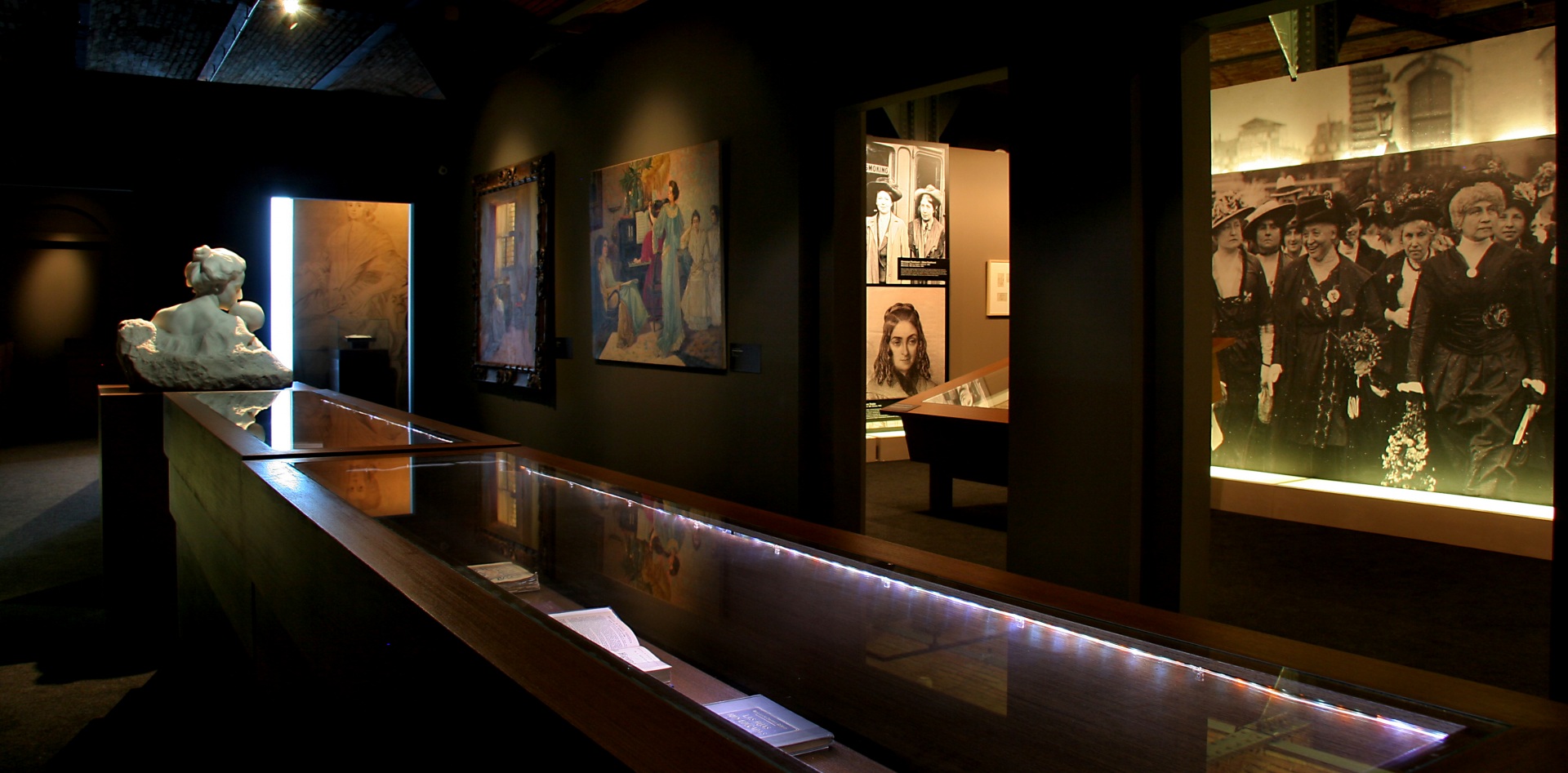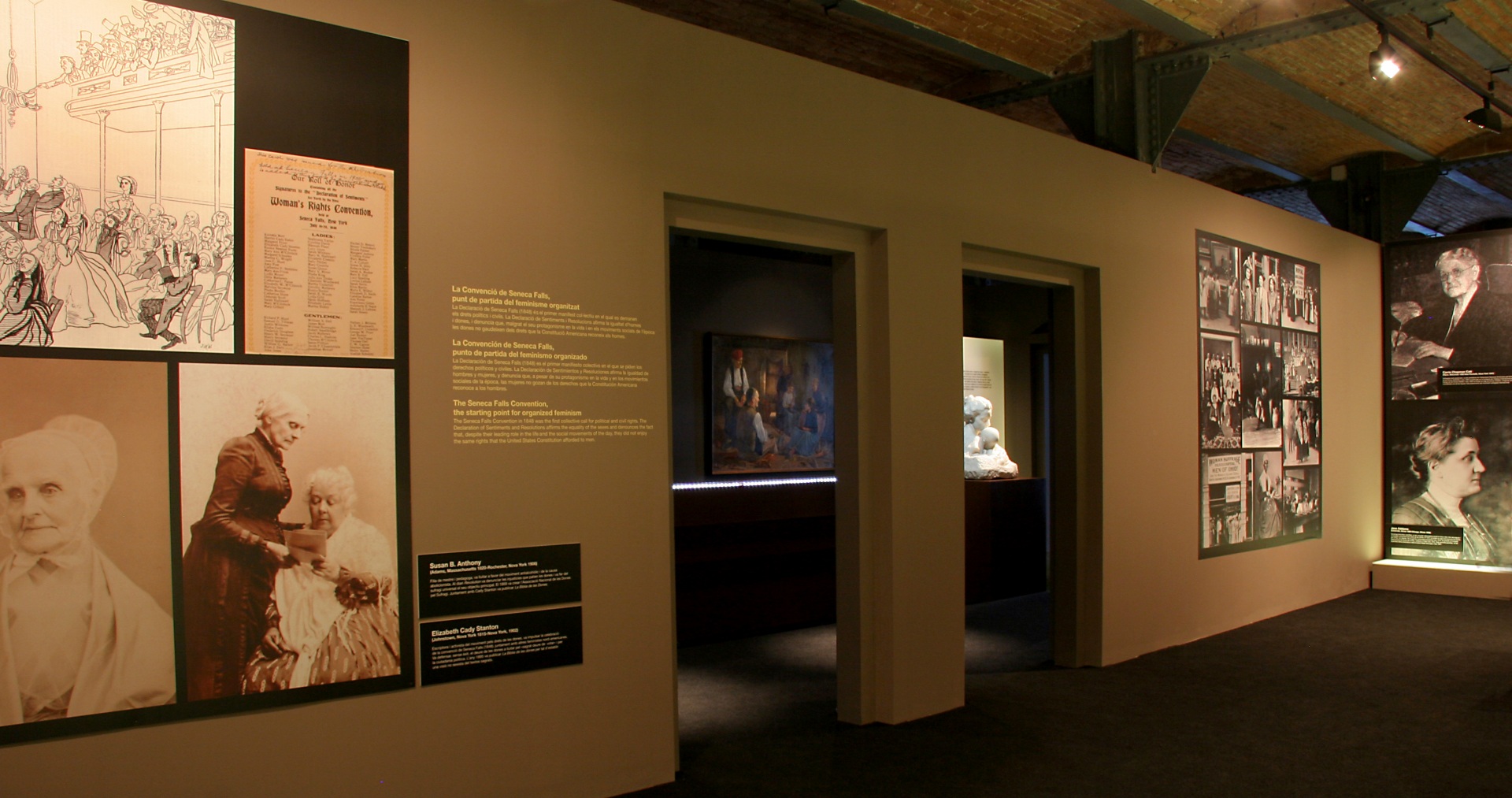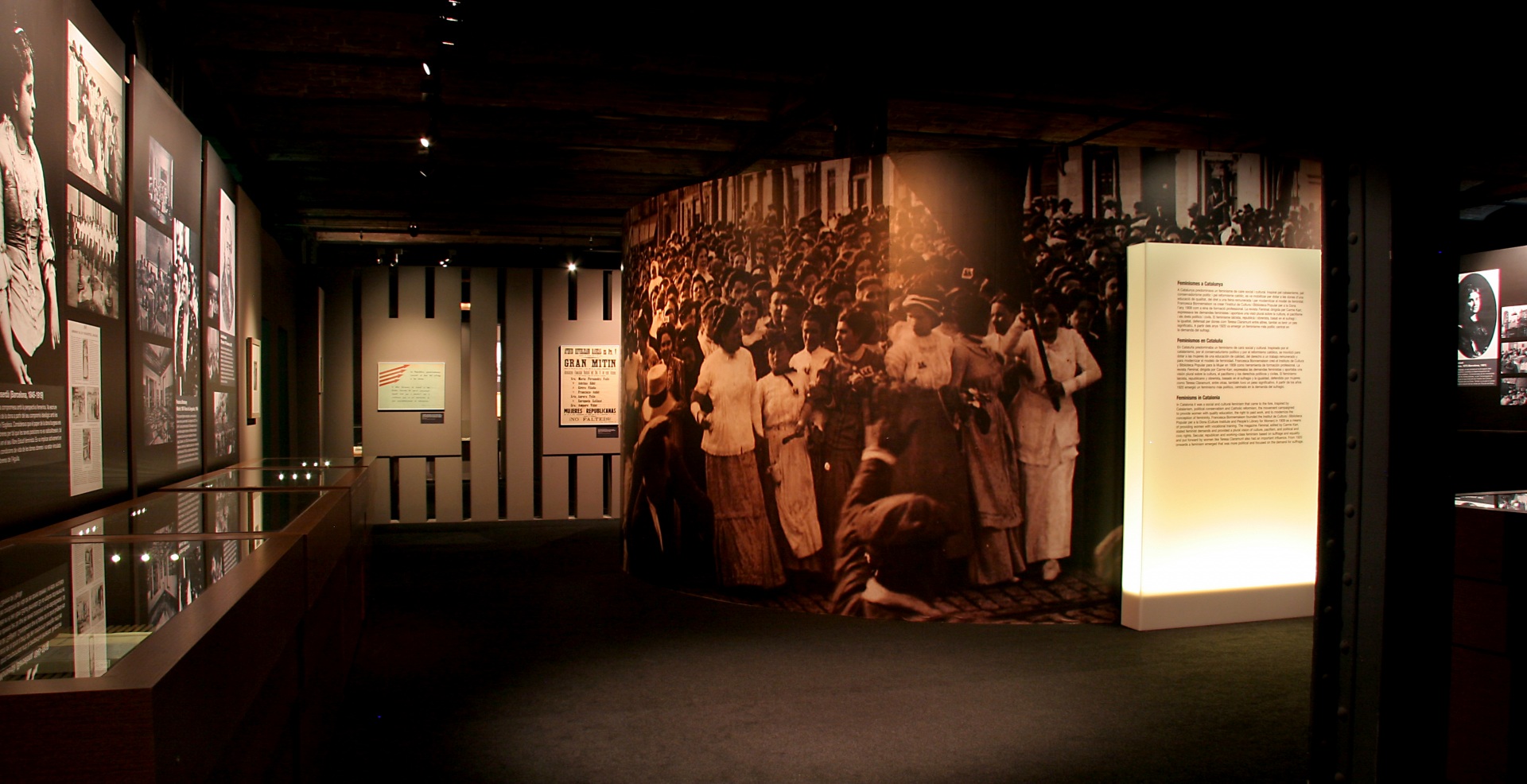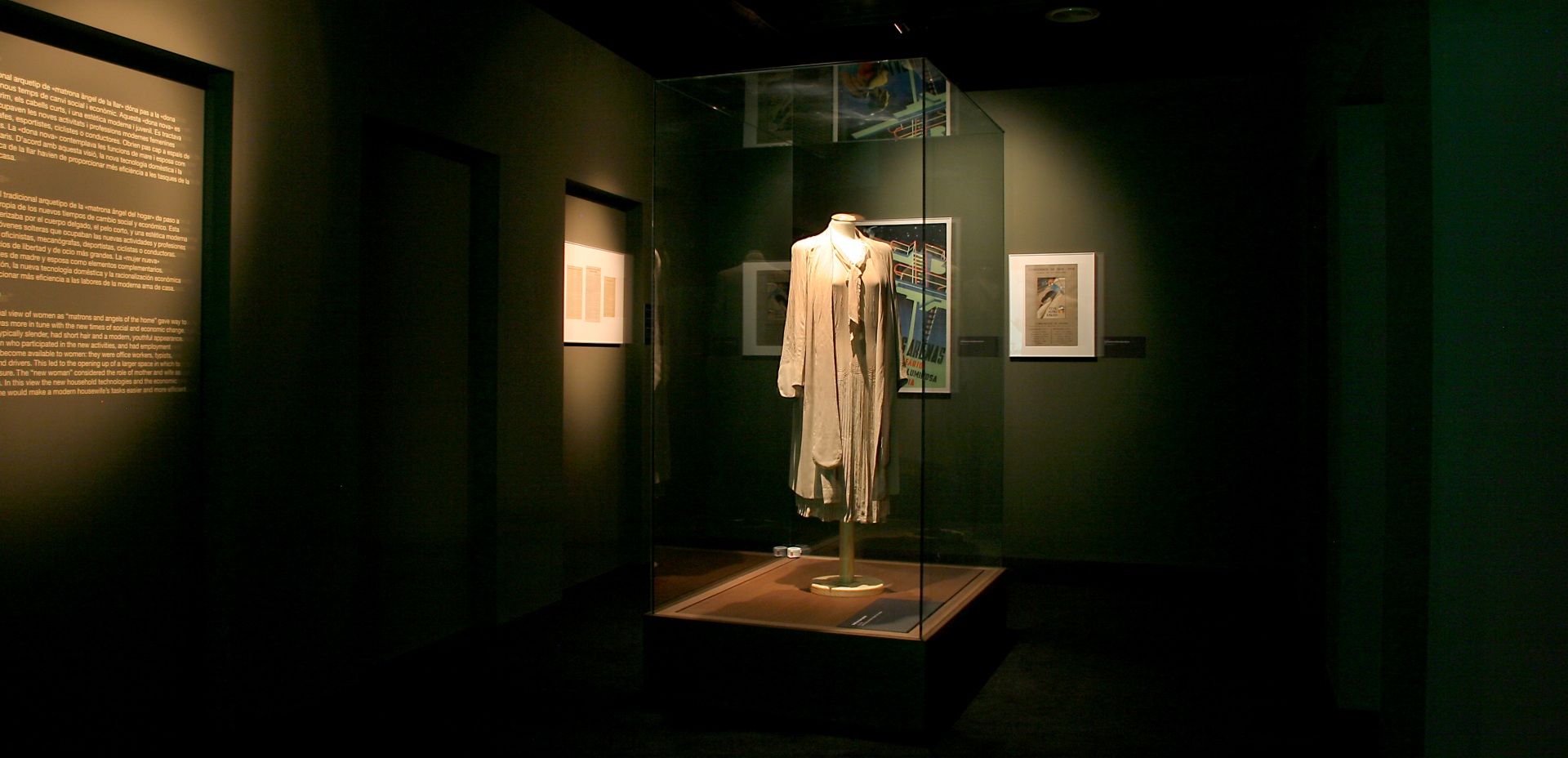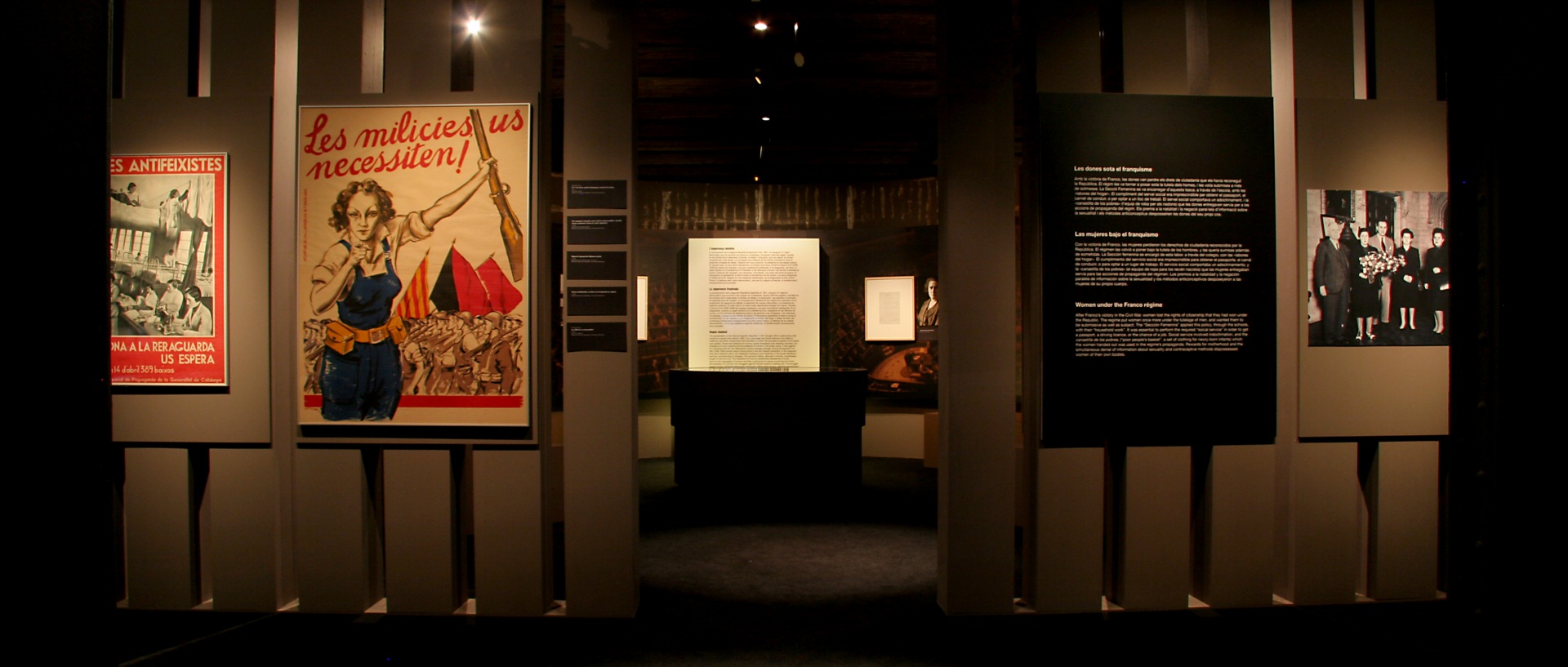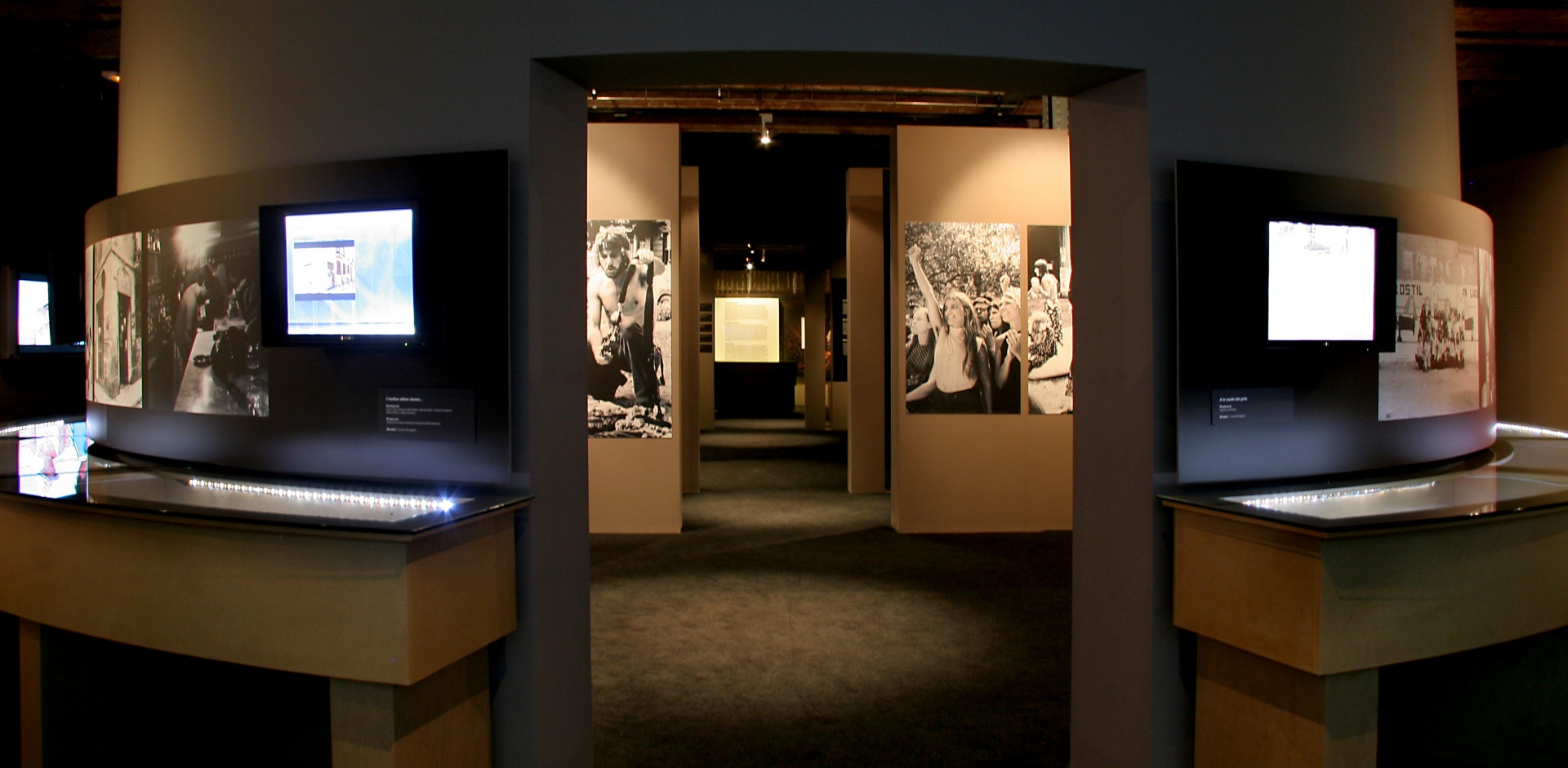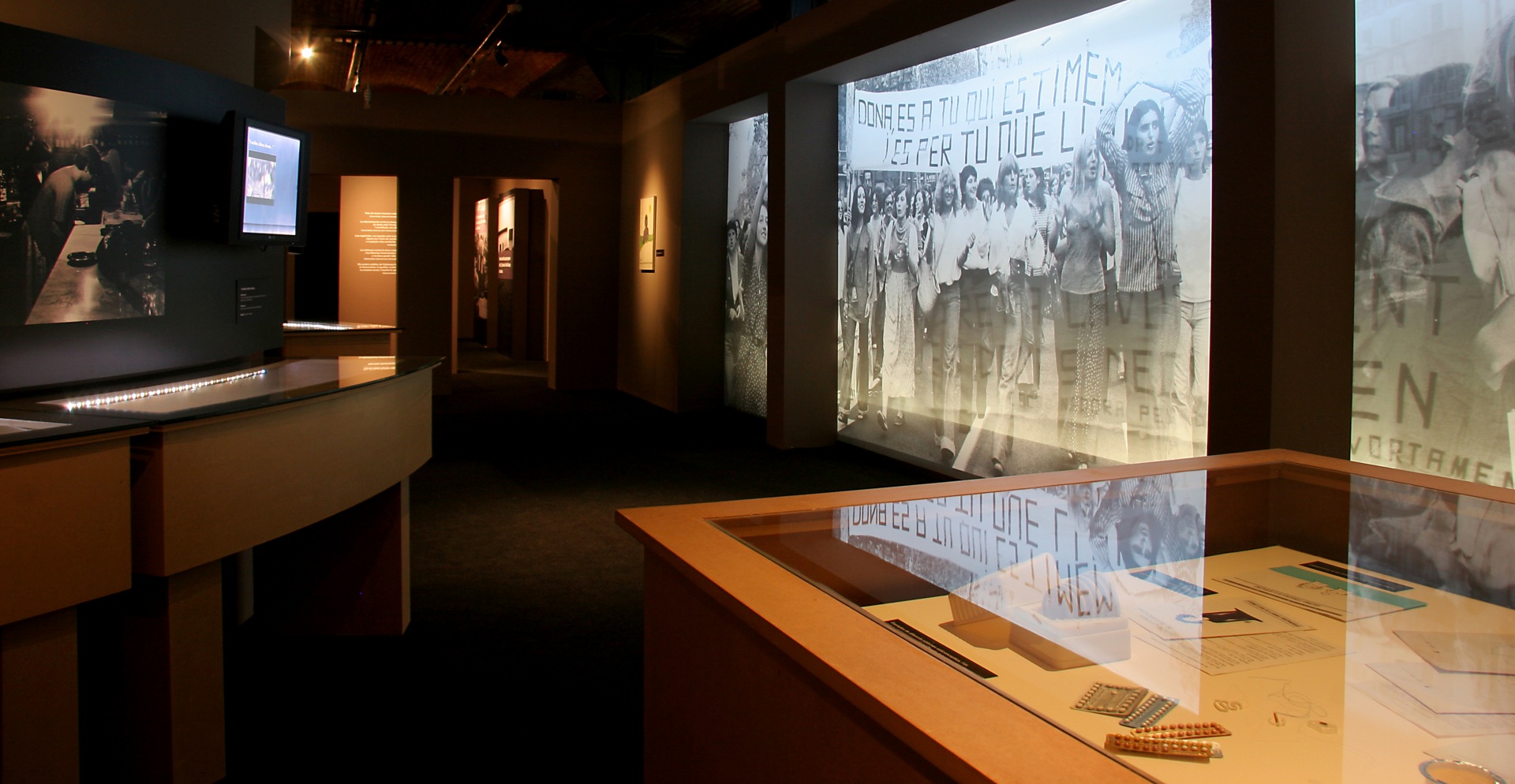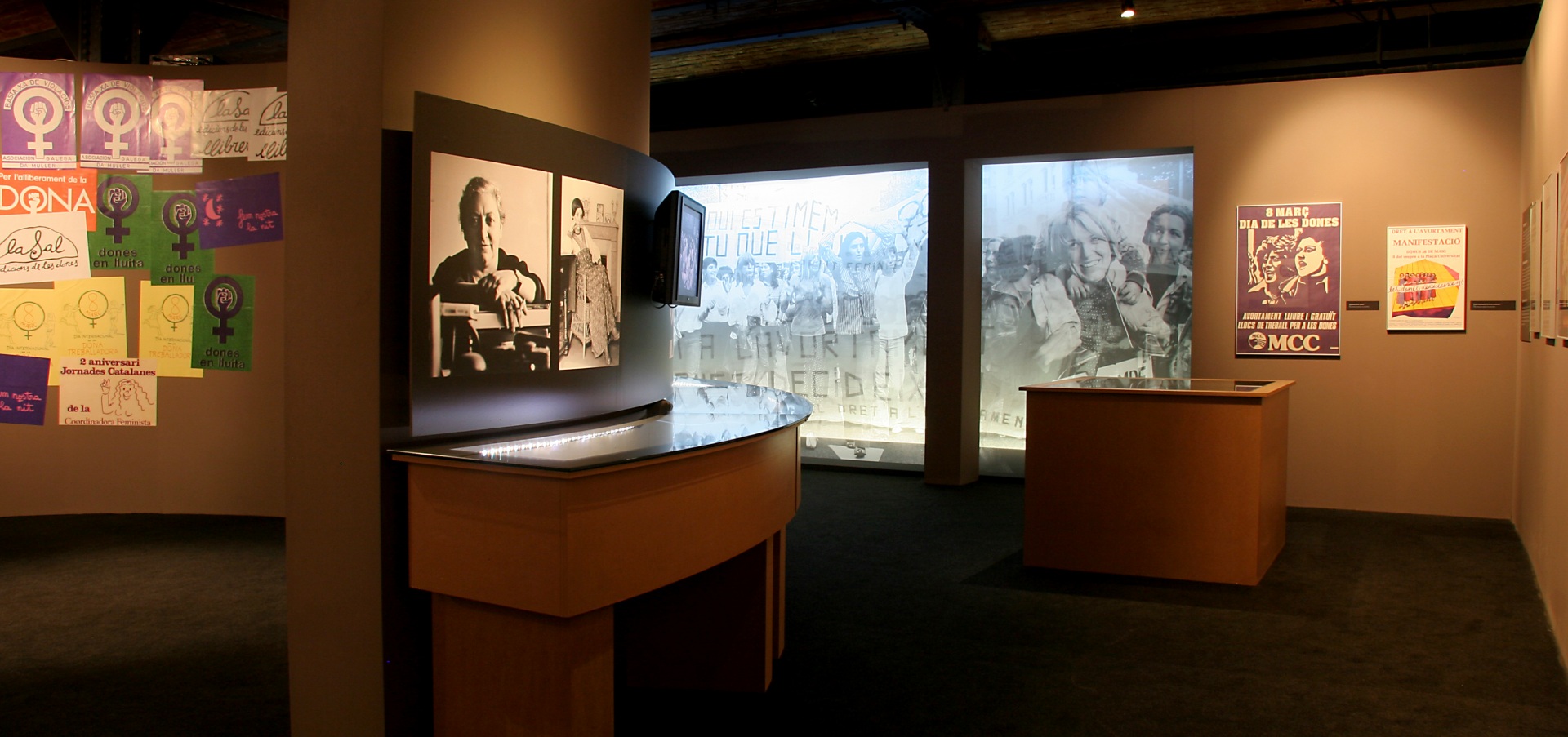The exhibition shows women’s struggle for rights and freedoms across history. Almost 300 objects help us follow the historical development of the feminist movement internationally and in Catalonia.
The history of women and their struggle for civil rights is tinged with darkness and light. That is the idea the design of this exhibition pursues. Depending on the pieces that fill the rooms, the space transforms: it is compressed and given freer reign in order to represent the ups and downs of the history of feminism through the staging.
The path begins along the length of a wall that is gradually dismantled and a roof that gets increasingly lower, causing a sense of uneasiness. Then there is a space dedicated to the advances of the French Revolution, built in a reproduction of the Paris skyline with a large flag French woven from a crowd of human figures. In contrast, the next room illustrates the 19th century concept of the domestic angel using deconstructed scenes of home interiors. Among them, there are light strips showing images of women who escaped from this gilded cage.
The next space represents the hope of the Seneca Falls Declaration. Here the space is expanded upward and outward; it is doubled by a large mirror on the ceiling, with a light at the end of the room that represents the glimmer of hope. That feeling vanishes again, however, with the beginning of Franco’s regime, a dark and distressing space that seems to erase the achievements of previous eras. A small window of light encourages us not to lose the fighting spirit. It will grow and reappear in the following rooms with icons like Virginia Woolf, Doris Lessing or Simone de Beauvoir, as well as the feminist movements during the Transition and the advent of democracy in Spain. The final room, an explosion of colour and activity, shows an endless row of posters that take into the middle of a demonstration defending the rights of the feminist movement. It represents the conquest of public space, but also the eternal illusion of equality on a battlefield where any terrain that has been won is liable to be lost, if it is not constantly defended.
Institutional sponsor: Museu d’Història de Catalunya
Location: Barcelona, Catalonia
© Photography: Ignasi Cristià SL

